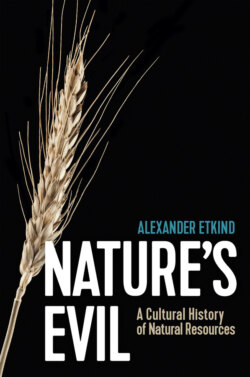Читать книгу Nature's Evil - Alexander Etkind - Страница 15
Roman fires
ОглавлениеThe level of harnessed energy reached a temporary peak in ancient Rome. The historian Ian Morris has used the number of kilocalories harnessed per head of population per day as ‘the measure of civilization’.6 Those religions that worshipped the sun as the ultimate source of life – the religions of the Egyptian pharaoh Akhenaton and the Persian prophet Zoroaster – understood this. Burning wood provides energy that can warm man and raise him up but can also destroy him. It is up to man which of these alternatives happens.
The building boom in ancient Rome required enormous quantities of timber. The exhaustion of forests caused the move from wooden walls and roofs to structures made of brick and ceramics; but the firing of clay in kilns also needed fuel. 150 cubic metres of dry firewood were needed to make 1 cubic metre of bricks; it took 10 tons of firewood to burn the limestone to produce 1 ton of cement. To heat ancient Rome, with its underfloor heating, huge baths and cooking stoves, required the cutting down of 30 square kilometres of forest per year.7 Those who worked on the felling, transporting and processing of timber were not slaves but hired hands, either peasants or barbarians. The smelting of bronze, iron and silver created the need for quality wood to make props for the mines and charcoal for heating the smelting cauldrons. Time after time, the authorities claimed the forests as state property, but this did not improve the supply. Rome’s drive towards the north, to the forests of Germany and even Britain, was connected with its thirst for timber and energy.
Emerging from the forests, the barbarians put out this fire. By the seventh century, the level of energy harnessed per person fell by a factor of two. Only many centuries later did the mass consumption of Dutch peat and British coal allow societies to exceed the energy consumption reached by the Romans. Like any other activity, extracting fuel requires energy. The production of a kilogram of firewood or coal takes about 5 megajoules. When wood is burnt, it produces three times the amount of energy used to produce it. For coal, the figure is up to a hundred times greater and, for oil, up to a thousand times. Different forms of stored energy have very different characteristics, and they shaped different societies. Cities heated by wood, such as Rome, are organised differently from cities heated by peat, such as Amsterdam, and from cities heated by coal, such as London. The Romans dreamt of gold, of miraculous machines and voyages to other worlds. None of them could have guessed that the peaty sludge and black stone they found in their chilly colony would turn out to be the greatest miracles of the new world.
